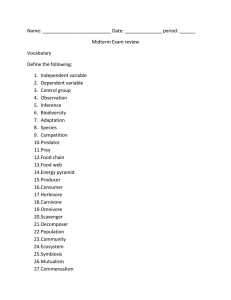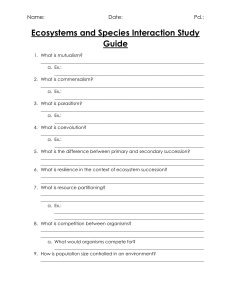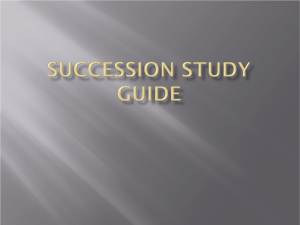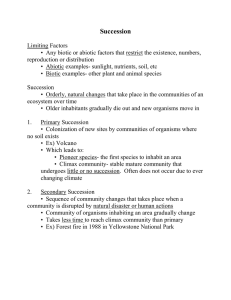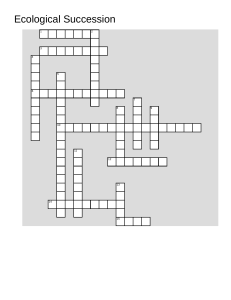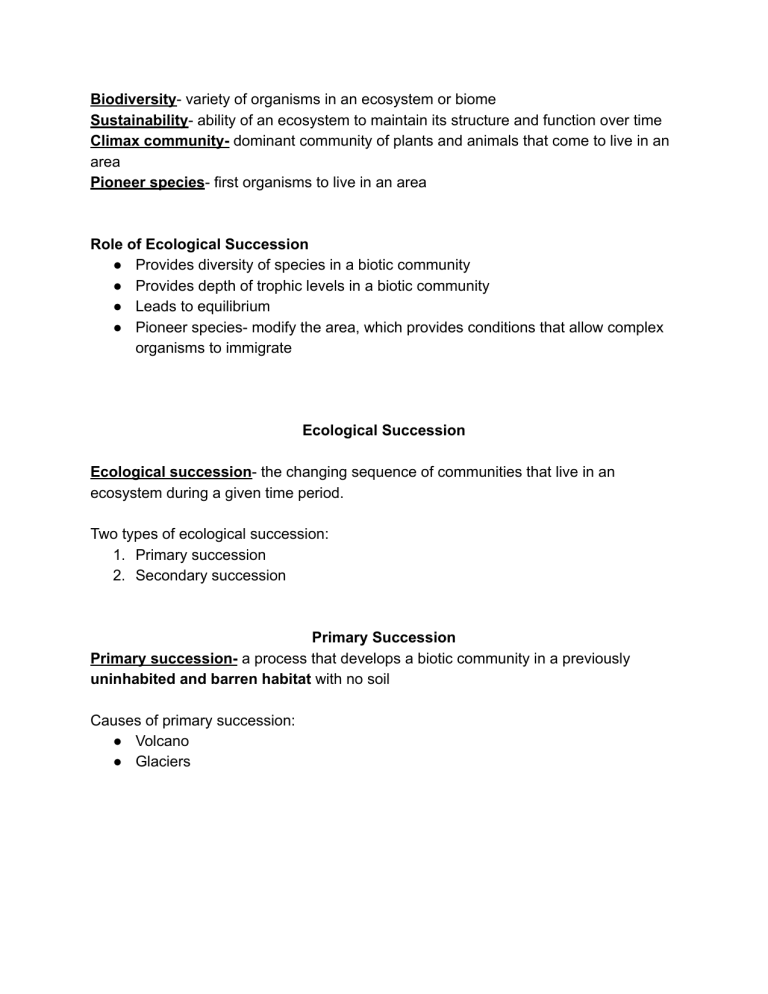
Biodiversity- variety of organisms in an ecosystem or biome Sustainability- ability of an ecosystem to maintain its structure and function over time Climax community- dominant community of plants and animals that come to live in an area Pioneer species- first organisms to live in an area Role of Ecological Succession ● Provides diversity of species in a biotic community ● Provides depth of trophic levels in a biotic community ● Leads to equilibrium ● Pioneer species- modify the area, which provides conditions that allow complex organisms to immigrate Ecological Succession Ecological succession- the changing sequence of communities that live in an ecosystem during a given time period. Two types of ecological succession: 1. Primary succession 2. Secondary succession Primary Succession Primary succession- a process that develops a biotic community in a previously uninhabited and barren habitat with no soil Causes of primary succession: ● Volcano ● Glaciers 1. 2. 3. 4. 5. Process of Primary Succession Pioneer species such as lichens and other factors that break down rocks to form soil Soil develops (this can take hundreds of years) ○ As soil gets thicker, it becomes capable of supporting small plants like mosses and ferns. Over time lichens and simple plants die and add more organic matter to the soil.Microscopic organisms can be found in the soil Grasses and small plants begin to grow Shrubs begin to grow Trees begin to grow ○ Insects, small birds, and other animals begin to move in (climax community) Secondary Succession Secondary succession- a process started by an event that reduces an already established ecosystem to a smaller population of species. Causes of secondary succession: Process of Secondary Succession Occurs in areas where soil has already formed and living organisms are supported ● ● ● ● ● ● There is already formed soil Weeds grow Grasses and small plants grow Shrubs grow Young forest Mature forest ○ Insects, small birds, and other animals begin to move in (climax community) Pond Succession Eutrophication- process in which organic matter and nutrients slowly builds up in a lake or pond ecosystem It can take hundreds of years for a pond to be transformed from a body of clear water to soil. Process of Pond Succession Increased nutrients allow algae and aquatic plants to grow, these organisms die, and organic matter is increased. The lake or pond slowly fills and eventually this aquatic ecosystem becomes a terrestrial ecosystem such as a meadow. Signs of a Mature Ecosystem 1. Climax species Community of producers forms first (pioneer species) followed by decomposers and consumers. As a community matures, it may become dominated by well- adapted climax species. An ecosystem dominated by climax species is stable until it is disturbed. 1. Biodiversity As succession continues, richer soil, nutrients and other resources become available. Increase in resource availability lets more species become established.

